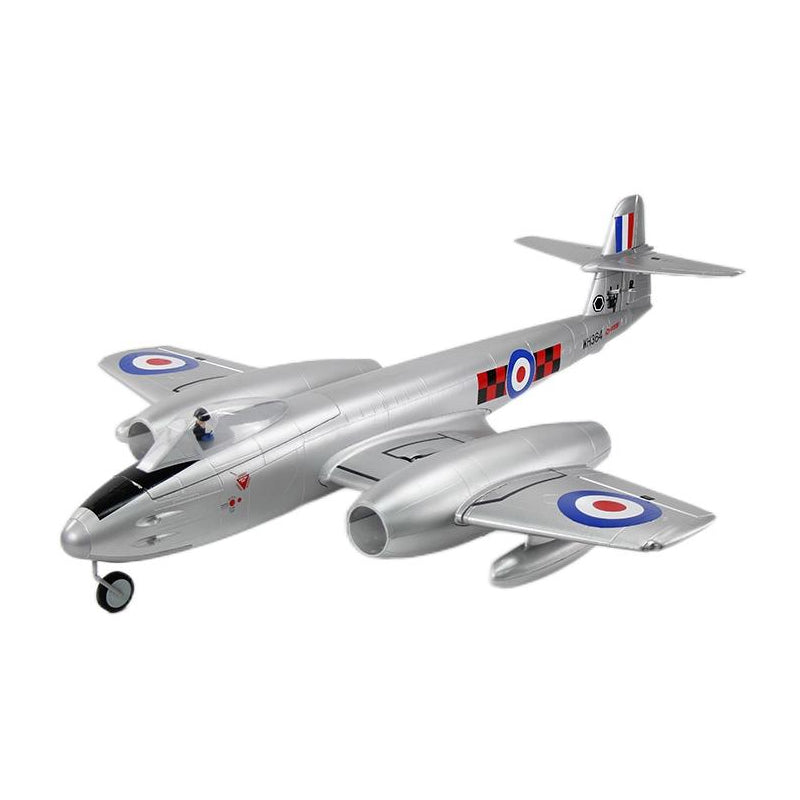Getting Started with RC Jets: Essential Tips for Beginners
Remote-controlled (RC) jets have become an exciting way to enjoy the thrill of flight without the complexities and costs associated with full-scale aviation. For beginners, diving into the world of RC jets can be both exhilarating and overwhelming. This guide will walk you through essential tips to help you get started on your RC jet journey, with a special focus on Dynam, a well-known brand in the RC aircraft community.
Understanding RC Jets
RC jets are miniature versions of real aircraft that can be flown using a handheld transmitter. They come in various types, including electric-powered and gas-powered models, each offering unique characteristics and flying experiences. Electric jets are particularly popular among beginners due to their ease of use, lower maintenance, and quieter operation. Understanding the basic principles of aerodynamics, flight control, and the various components of an RC jet is crucial for any aspiring pilot.
Choosing Your First RC Jet
When selecting your first RC jet, there are several factors to consider. One of the primary aspects is the level of your experience. If you're completely new to flying, it's advisable to start with a beginner-friendly model. Dynam offers several options tailored to beginners, with designs that are forgiving and easy to handle.
One standout model is the Dynam Turbo Jet, which is known for its stability and ease of flight. This electric-powered jet is made from durable EPO foam, making it lightweight yet resilient against crashes—an inevitable part of the learning process. The Turbo Jet also features a simple assembly process, allowing you to get it ready for flight quickly.
Key Features of Dynam Jets
Dynam jets are designed with a focus on performance and durability, making them suitable for beginners. Key features include:
-
Ready-to-Fly (RTF) Kits: Many Dynam models come as RTF kits, meaning they include everything you need to start flying right out of the box, including the aircraft, transmitter, and battery. This convenience eliminates the steep learning curve associated with assembling various components.
-
Durable Construction: The use of EPO foam in Dynam jets provides a lightweight yet robust design, helping to withstand the occasional crash that beginners may experience. This feature allows you to gain confidence in your flying abilities without worrying too much about damaging your aircraft.
-
User-Friendly Controls: Dynam models often come with straightforward control systems that are easy for novices to master. With a basic understanding of throttle, ailerons, and elevator controls, beginners can quickly learn to maneuver their jets effectively.
-
Scale Designs: For those interested in aesthetics, Dynam offers a range of scale models that replicate real-life jets. This attention to detail not only enhances the visual appeal but also enriches the flying experience.
Learning the Basics of Flight
Before you take to the skies, it's essential to understand some fundamental concepts of flight. Basic knowledge of aerodynamics, such as lift, thrust, drag, and weight, will enhance your understanding of how your RC jet operates. Lift is the force that allows the aircraft to rise off the ground, generated by the wings as air flows over and under them. Thrust is the forward force produced by the jet's engines, while drag is the resistance faced as the jet moves through the air. Weight is the force due to gravity acting on the jet. By familiarizing yourself with these concepts, you’ll be better prepared to handle your RC jet in various flight conditions.
Mastering Flight Techniques
Once you have your RC jet and a basic understanding of flight principles, practicing your flying skills is crucial. Start slow, selecting calm weather conditions for your initial flights. This will help you focus on controlling your jet without the added challenge of wind. Consider using a flight simulator to practice your techniques in a safe environment; many simulators replicate the controls and dynamics of flying an RC jet, allowing you to build confidence. As you gain experience, learn to trim your jet to maintain stable flight by adjusting the control surfaces with the trim functions on your transmitter. Practice essential maneuvers like takeoffs and landings, starting with short flights on a flat surface and gradually increasing your time in the air. Joining a local RC flying club can provide valuable resources and mentorship, helping you develop your skills further and giving you a supportive community to share your passion.
Maintenance and Care
To ensure your RC jet remains in top flying condition, regular maintenance is essential. Always inspect your aircraft for any damage before each flight, checking for loose parts, battery charge, and the functionality of control surfaces. After flying, clean your jet gently to remove dust and debris that may have accumulated. Proper storage is equally important; keep your RC jet in a safe, dry place, avoiding extreme temperatures and humidity that can damage electronic components. Pay special attention to battery management, following the manufacturer’s guidelines for charging and storing your Lithium Polymer (LiPo) batteries, as they require specific care to ensure their longevity and safety. By establishing a routine for maintenance and care, you'll extend the lifespan of your aircraft and enhance your flying experience.
Conclusion
Getting started with RC jets can be an incredibly rewarding experience, combining the thrill of flight with the joy of model building and flying. By choosing a reliable brand like Dynam, familiarizing yourself with the principles of flight, practicing essential techniques, and maintaining your aircraft, you’ll be well on your way to becoming a proficient RC jet pilot. With dedication and patience, you’ll soon find yourself soaring through the skies, enjoying the unparalleled freedom that comes with flying your own RC jet. Remember, every expert was once a beginner—so embrace the learning process, and have fun!







